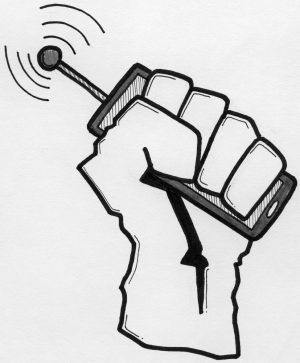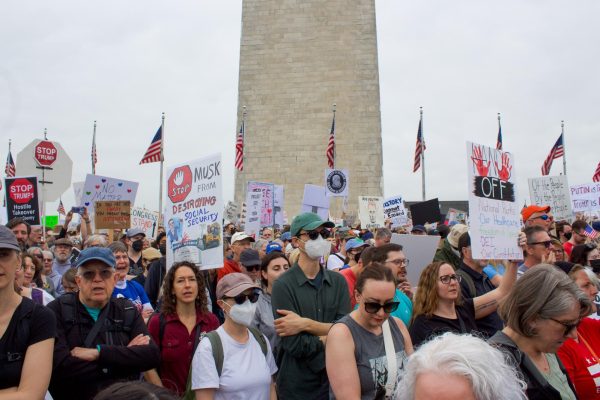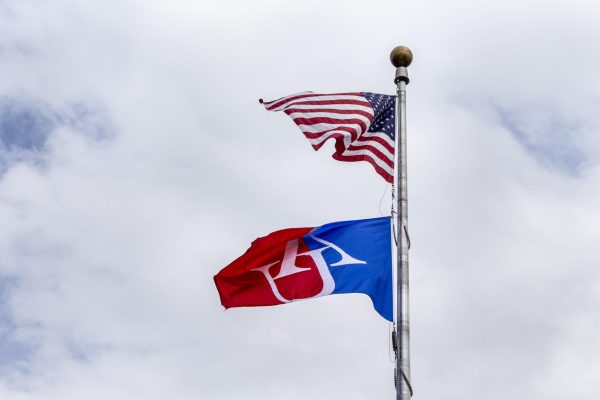Click It or Picket: Activism in the Internet Age
We’ve all been there: you sign into your Facebook account and see a dozen new invites to groups, events and associations that you have never heard of from people you don’t talk to. It seems everyone has a cause, and they’re using Facebook, Twitter and YouTube to tell you all about it. There is even an application within Facebook called “Causes,” where users can browse different groups sorted by categories like “animals” and “education.” Or, if you can’t find a spot on any of the 500,000 user-created bandwagons, you can simply make your own —free of charge with a click of your mouse. It makes activism easier, simpler and more accessible for anyone with an Internet connection.
Admittedly, online activism usually revolves around more mundane issues than traditional street protests. A Facebook group to elect a student government president isn’t the same urgent social statement as the Civil Rights protests of the 1960s. Still, the potential for social networking to spark social movements is a hot topic, and technophiles have given Facebook and Twitter enormous credit for the recent protest movements in the Middle East and North Africa. In his review of Evgeny Morozov’s book Net Delusion, Lee Siegel of The New York Times wrote on Feb 4 that in both Tunisia and Egypt, “social networking allowed truths that had been whispered to be widely broadcast and commented upon.”
Others have pointed out the influence social networking has had on governments worldwide. Some say that social networking and the Internet provide convenient means of oppressing a populace. Siegel’s colleagues in China, Edward Wong and David Barboza, reported on Jan 31 that the Chinese government had enforced Internet censures immediately after news spread of Facebook groups sympathetic to the Egyptian cause. It is this kind of manipulation of technology to which Morozov refers in Net Delusion; he assures his readers that access to Internet media alone does not beget liberation.
***
Facebook activism hasn’t been limited to foreign crises. The upheaval in Wisconsin after the state government announced measures to bar unions’ collective bargaining abilities was permeated by social networking. As University of Wisconsin students gathered in a physical demonstration of solidarity, students across the country joined in the “Virtual Vigil,” where clicking the “Join” button turned home-bound users into active participants.
It is this sort of “active inaction” that characterizes the term “slacktivism.” Implying a degree of laziness, critics contend that an individual pledging collusion via a computer screen has serious implications for the credibility of movements for social and political change. AU sophomore Mariam Aziz was born in Egypt and was compelled to immediately react to the anti-government demonstrations there. She organized protests outside of the Egyptian Embassy in DC and has spoken out in support of the uprisings. She said social networking “played a significant role in starting the revolution, but definitely not in directly causing political change.”
Aziz believes in the role of social media in activism, but confirms its limited ability to affect true political change on its own. She does recognize social media’s benefits in organizing without overstating its effect on policy: “Activists use it to spread the word about events or an entire revolution!”
Malcolm Gladwell of The New Yorker wrote in October that there are two major differences between the Civil Rights Movement and today’s social media-infused activism: the “risk factor” and organization.
Gladwell contends that social media and the Internet have eliminated the “risk factor” from social activism. Rather than joining time-consuming, dangerous bus boycotts or confrontational protests, people can join a Facebook page from the comfort of their home, free from the judgment of their peers. Gladwell also discusses the importance of “strong-tie phenomena,” which he describes as the personal connection necessary for a successful, influential movement. Activism through social media, he contends, “manages acquaintances,” and isn’t characterized by strong, value-based connections between participants.
In his classic sociological study Bowling Alone, Robert Putnam echoes these sentiments: “Because of the paucity of social cues and social communication, participants in computer-based groups find it harder to reach consensus and feel less solidarity with one another.” Instead, it seems that “slacktivists” focus on general concerns more than specific issues, the protest of which would be unlikely to attract public scrutiny. In other words, online movements have begun to accommodate “fad disasters,” creating causes that will be accepted by all, while no serious gains are possible.
Gladwell offers the Save Darfur movement on Facebook as an example. As of October 2010, Facebook’s most popular group within the “Causes” app had 1,282,339 members, its second most popular group claimed 22,073, and its third most popular group had only 2,797 participants. Respectively, members had donated an average of nine, 35 and 15 cents per participant in each group. Gladwell observes, “Facebook activism succeeds not by motivating people to make a real sacrifice but by motivating them to do the things that people do when they are not motivated enough to make a real sacrifice.”
However, the argument that Facebook activism eliminates the risk factor is directly contested by the recent events in the Middle East. Many journalists and analysts agree that social media was an important component of the protests. Had it not been for “We are All Khaled Said,” the Facebook group dedicated to the innocent Egyptian brutally murdered by police, the Egyptian organization of young people in Tahrir Square would have been fairly inconsequential. The solidarity that was established through social media over a specific event was one of the main catalysts of the Egyptian and Tunisian protests.
This mass solidarity suggests a new model of protest separate from Gladwell’s second point of distinction: the level of organization. Groups that affected serious change on social and political policy used hierarchies and structures that allowed them to efficiently pursue specific initiatives based on calculations and intense planning. Gladwell argues, “The things that King needed in Birmingham — discipline and strategy — were things that online social media cannot provide.”
How true is this claim? If nothing else, those organizations centered on Wisconsin, the Middle East and even the Save Darfur campaign have shown the ability to mobilize thousands of people for their cause. Mobilization may look different now than it did in the past; Gladwell himself admits that the focus of social activism has shifted “from organization to adaptability.” These organizations have tapped a powerful resource that can instigate both popular support over a large area, as in the case of Wisconsin state government protestors and the Save Darfur movement, and physical support at home, as was the case in Tunisia and Egypt.
While they increasingly rely on “weak-tie connections,” as Gladwell calls these associations, perhaps social media establishes a new bond, which, unlike the Civil Rights Movement and other protests of the past, exists outside of “weak” or “strong.” Perhaps social activism is helping to bring people together, regardless of their previous acquaintance, establishing a basic unity inherent in humanity.
***
This could all be wishful thinking. At AU, professors and students alike are witnessing the rise of social media. Call them “cautiously optimistic.” Professor Bryan McNeil of the Anthropology department has experienced social networking activism firsthand in his advocacy work with coal miners in Appalachia. In McNeil’s experience, Facebook has been a force for organization and coordination. “I think that communication technology in general can be used very effectively to disseminate information. Social networking, as well as old-fashioned email, is really good at keeping a lot of people in the loop with different kinds of information.”
Better organization is, undoubtedly, a benefit of using social networking as a tool for activism. Fellow Anthropology Professor Adrienne Pine agrees, to an extent. “I think it’s a really important tool, but I think we have to recognize that it’s one of a series of tactics that needs to be part of a larger strategy,” she said. Pine points out that the responsibility of an activist group is to prove that their movement can be successful. In Pine’s opinion, “what really proves the effectiveness of the movement is the results it gets in terms of the people it can mobilize and the change it is able to make.”
These “results” can’t come from Facebook alone. Pine and McNeill agree that the uprisings in Egypt, Tunisia, Libya and Bahrain were not “Facebook revolutions” or “Twitter revolutions.” Pine recognizes that social media was a crucial component of the uprisings, but doesn’t believe “slacktivism” is a viable alternative to real action. “If people believe that clicking on something or creating a Facebook ‘cause’ will actually make a change, then they’re becoming part of the problem. What that’s actually doing is giving them a justification for not doing something more meaningful.”
However, social media shouldn’t be totally dismissed as a force of indolence in social action. It certainly has merits: better coordination, better organization, better communication. It has helped to affect political change as a tool of movements that use it to send a message. Though Gladwell and other professionals believe social media may cater to the growing culture of laziness and a generational lack of motivation, it is important to remember that their generation — that of Woodstock, the Freedom Riders and the New Left — was also considered lazy and incapable. We need not remind them that it only takes one protest, one movement, one “Cause” to make a change, and, if nothing else, Facebook can help.
Illustrations by Max Gibbons.














